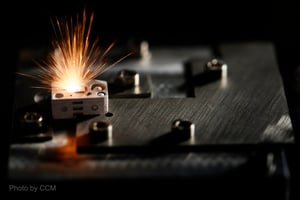Case Study: Hyproline - EU Additive Manufacturing Initiative
Complete the Form on the Right to Download the Hyproline Case Study as PDF
ITI's CADfix supports innovative Additive Manufacturing process for mass production of 3D printed parts

Summary
The Hyproline consortium began as a result of an EU FP7 Factories of the Future Program grant. The goal of the Hyproline initiative is to design, implement, and validate a flexible, high-performance additive manufacturing line for serial fabrication of customized high-quality metal parts. The initiative combines innovative component technologies for net shape manufacture, direct write structuring, inspection, and intelligent automation.
Hyproline endeavored to develop production lines designed to produce multiple, unique parts, while simultaneously adapting to the specific requirements of a given component on the same line. The solution featured an innovative combination of additive manufacturing and laser-based structuring, coupled with integrated process monitoring and metrology systems. The results were successful.
CADfix, ITI’s translation, repair, and defeaturing solution, was used to prepare CAD geometry for the additive manufacturing step, to convert the point cloud to the 3D surface, and to compare the as-produced 3D object with the CAD model while on the production line. CADfix was also used to generate tool paths to drive the laser ablation stage of the production line.
CADfix is ideally suited for this type of additive manufacturing because of its flexible, closely linked representations of geometry, ranging from continuous CAD geometry to discrete faceted geometry such as facets, slices, or point clouds. Access to multiple forms of geometry enables CADfix to be effectively applied to all aspects of the AM geometry process chain. For the Hyproline platform, CADfix compared the point cloud scans to the as-designed CAD to extract the excess material to be removed by the laser processing stage.